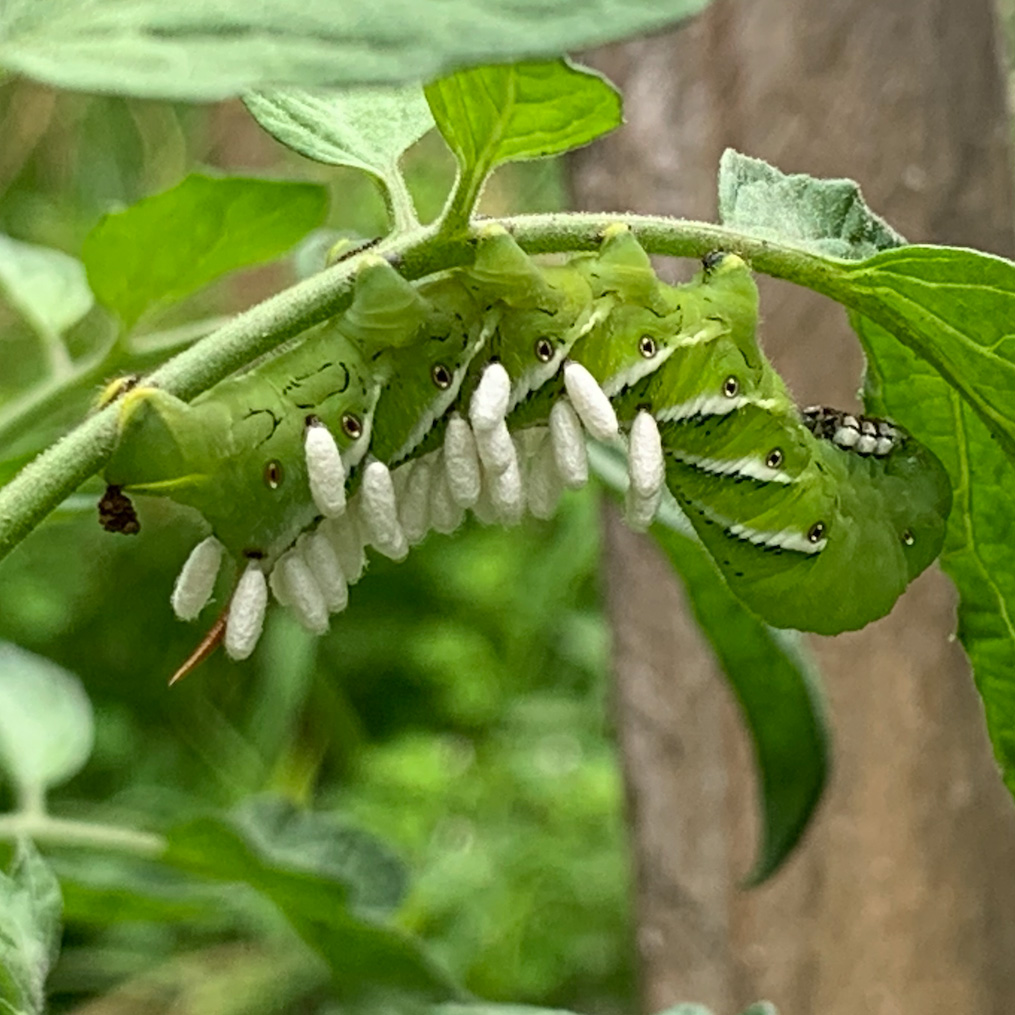Beneficial Insects
Searcy, Ark. –
Many insects eat other insects and serve as a way to keep their populations in check.
Lady bugs consume huge quantities of aphids which would otherwise munch the leaves of vegetable crops. Parasitic flies lay their eggs on tomato hornworms that would decimate our prized tomato plants. Lacewings, praying mantises, and spiders are also common insects that view the pests in our garden as an all-you-can-eat buffet. They are part of the circle of life and their presence creates balance in population sizes.
How can you make sure your garden makes a good home for these hard-working insects?
Just like people, insects want to spend time in a safe and welcoming environment.
To make sure your garden is hospitable for beneficial insects:
- Avoid pesticides. Don't use any pesticides (organic or chemical). Although some target
specific pests, many will harm both problem and beneficial insects.
- Use diverse plant materials. Make sure your landscape includes plants the beneficial
insects need for food. Although many will prey on other insects, they may also need
nectar and pollen for a well-balanced diet in different stages of their lives. You
can usually achieve that by planting a diversity of plant species and plants native
to your area. Many are attracted to plants in the cabbage, carrot, and sunflower families.
Examples of beneficial insect-attracting plants are bee balm, borage, broccoli, buckwheat,
calendula, candy tuft, chervil, chives, cilantro, clover, daisy, dill, fennel, goldenrod,
mint, parsley, Queen Anne's lace, sunflower, sweet alyssum, tansy, thyme, and yarrow.
- Provide a source of water. Even beneficials need to quench their thirst. Shallow pools
of water in filled with perching stones or gravel can meet their needs.
- Give them some shelter. Let an area of your garden or green space go “wild.” A wooded area or hedgerow 10' to 20' north of the garden is ideal, but even a small undisturbed area will give beneficials a place to shelter and nest. You can also just leave a little lawn — turfgrass is home to certain beneficial insects.
By Sherri Sanders
County Extension Agent - Agriculture
The Cooperative Extension Service
U of A System Division of Agriculture
Media Contact: Sherri Sanders
County Extension Agent - Agriculture
U of A Division of Agriculture
Cooperative Extension Service
2400 Old Searcy Landing Road Searcy AR 72143
(501) 268-5394
ssanders@uada.edu
Related Links
The Arkansas Cooperative Extension Service is an equal opportunity/equal access/affirmative
action institution. If you require a reasonable accommodation to participate or need
materials in another format, please contact your County Extension office (or other
appropriate office) as soon as possible. Dial 711 for Arkansas Relay.
The Arkansas Cooperative Extension Service offers its programs to all eligible persons
regardless of race, color, sex, gender identity, sexual orientation, national origin,
religion, age, disability, marital or veteran status, genetic information, or any
other legally protected status, and is an Affirmative Action/Equal Opportunity Employer.
